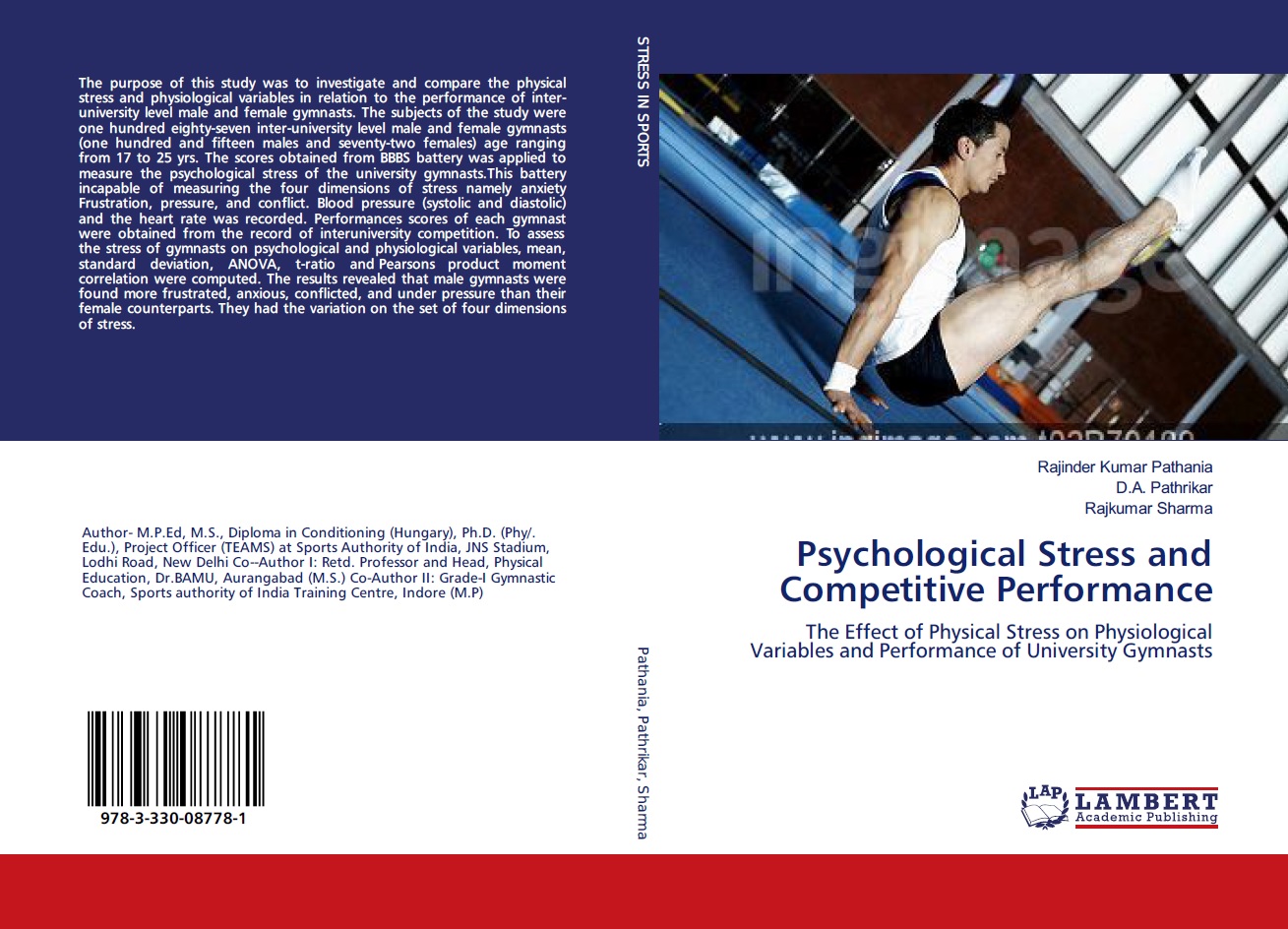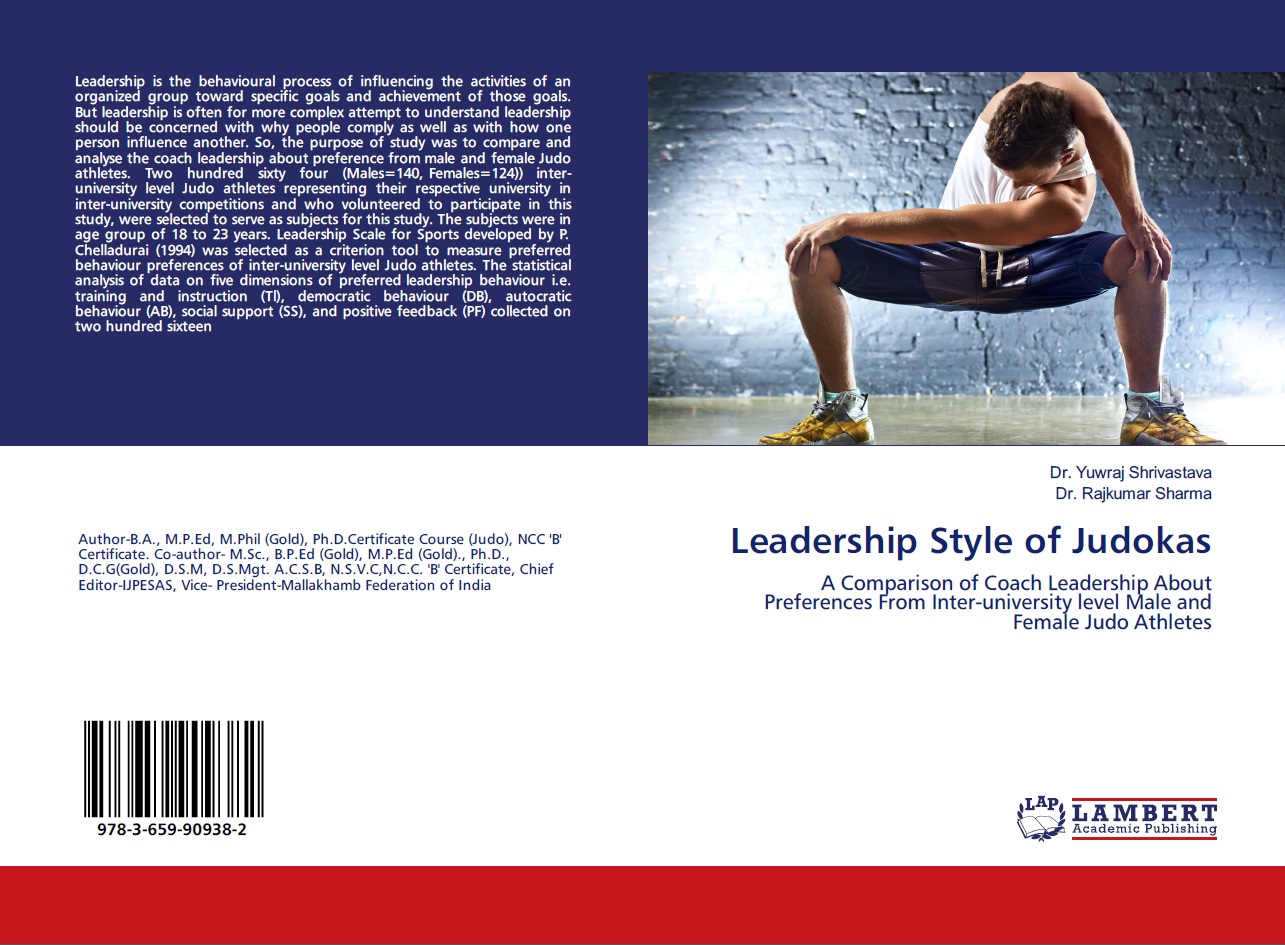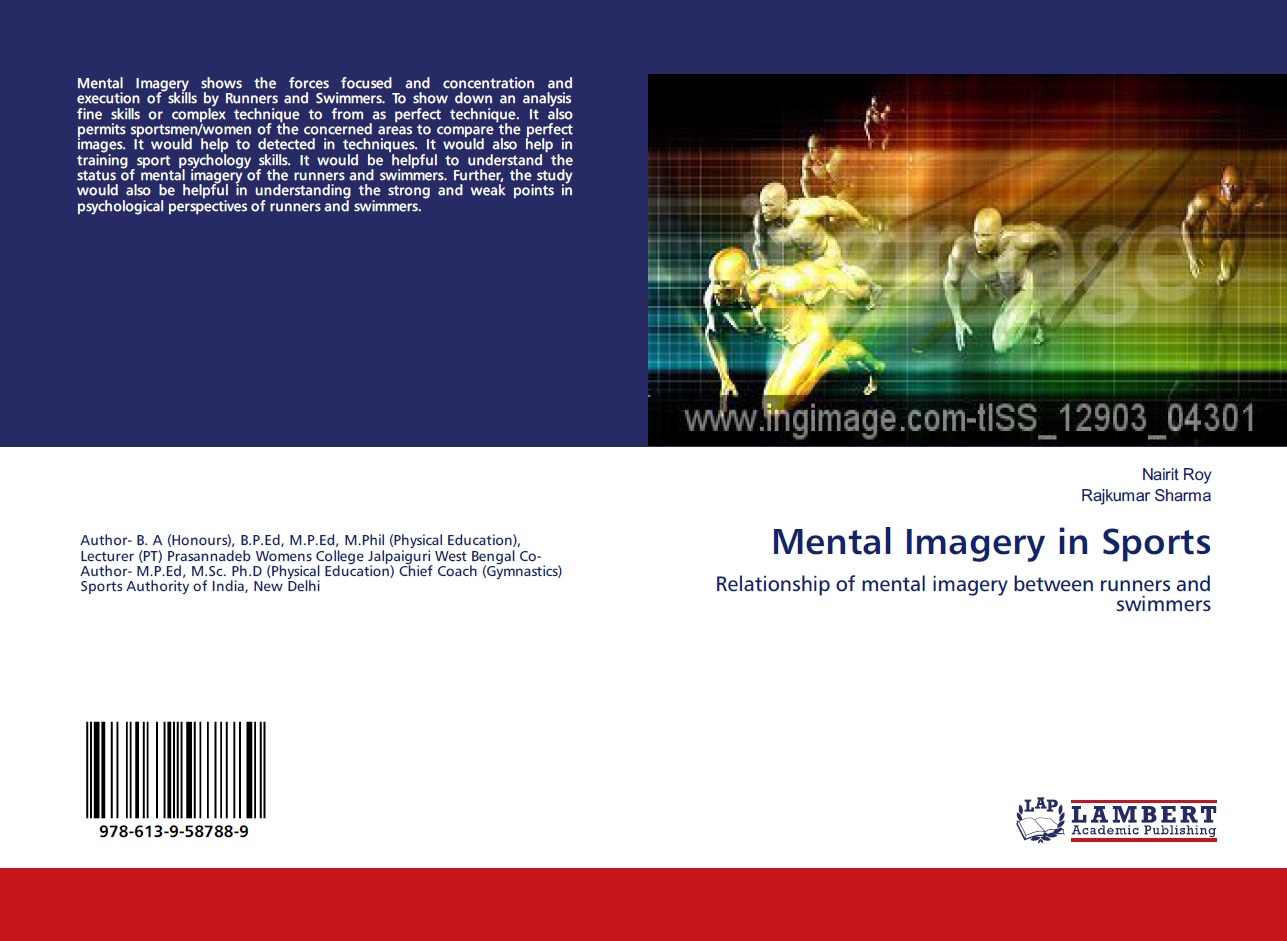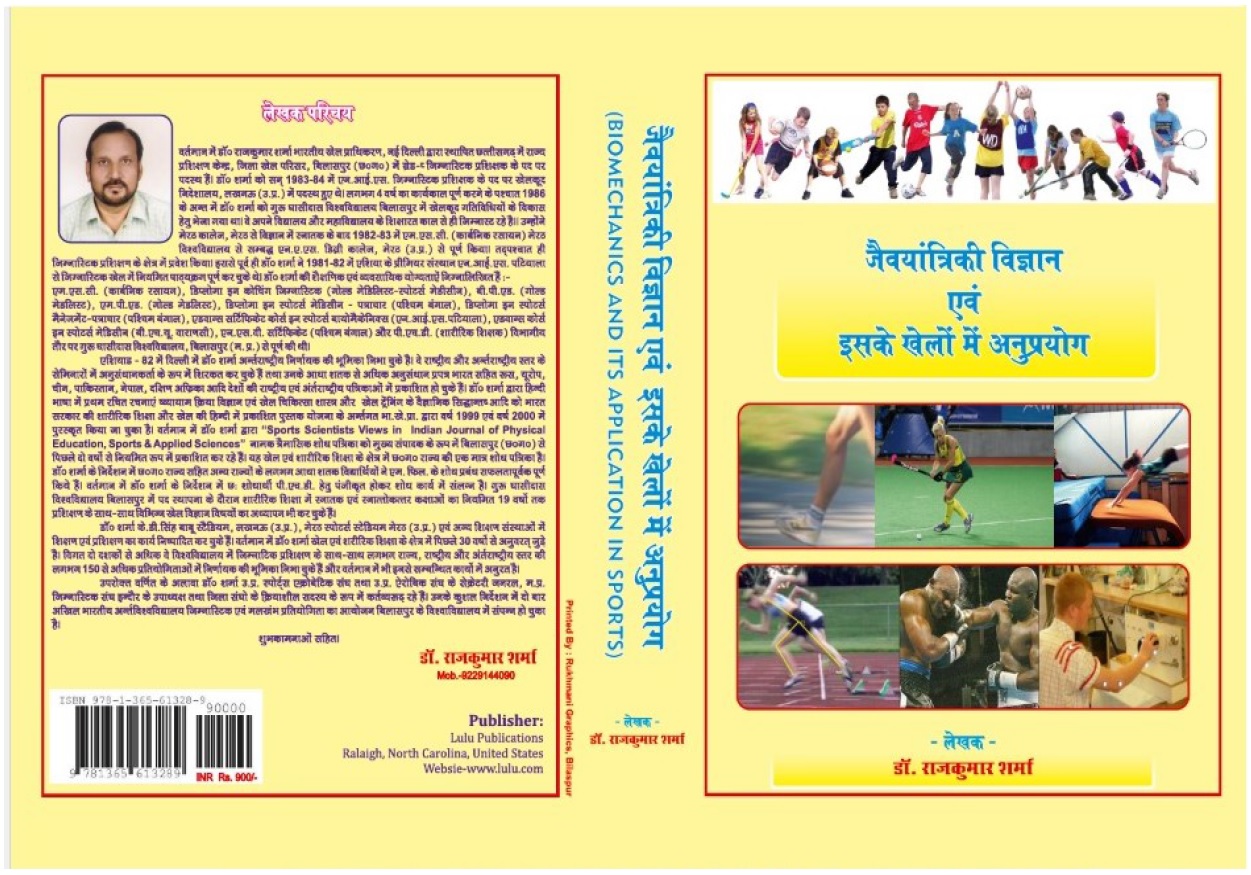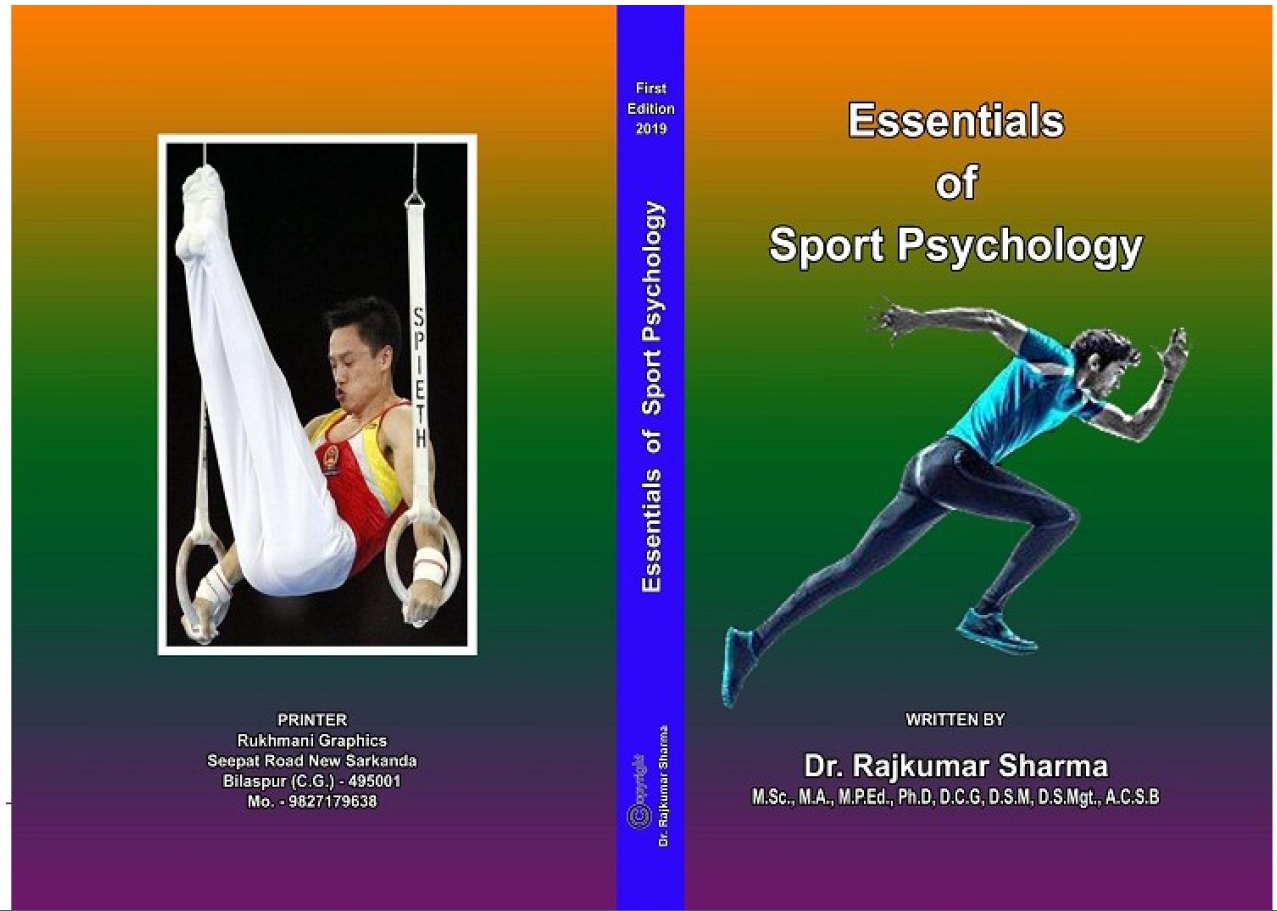| S.No. | Total View Count | Title of Manuscript | Page No | Download/ PDF |
|---|---|---|---|---|
| 1 | A STUDY OF MOTIVATIONAL CHARACTERISTICS OF MALE AND FEMALE KABADDI PAYERS Author: Neetu Singh and Prof. R.K. Yadav | 01-05 |  39 39 |
Article info
doi no.: 05-2016-44975451,
DOI Link :: https://doi-ds.org/doilink/02.2022-67386428/IJPESAS/05.2016-44975451/V12/I1/A1
AFFILIATIONS:
- Research scholar, Department of Physical Education R.D.V.V. University Jabalpur (M.P.)
- Head, Department of Physical Education R.D.V.V. University Jabalpur (M.P.)
The purpose of the present study was to explore and compare the motivational characteristics of male and female kabaddi players representing their respective state in 65th Senior National Kabaddi Championships held at Hyderabad in the Year 2017-2018.Sports Motivation was assessed using Sports Motivation (SMS-6) scale constructed by Mollet et. Al. (2007) was used 240 national level kabaddi players were selected for the present study of which 120 were males and 120 were female players. The subject complete sports motivation scale to assess various factor of motivation i.e. A motivation, External Regulation, Interjected Regulation, Identified Regulation, Integration Regulation and Intrinsic Motivation. Results revealed that male kabaddi players were significantly more Interjected Regulation than females. Male kabaddi players also exhibit more external regulation. However, there was no significant difference between male and female but female kabaddi player achieved high mean scores in amotivation, identified regulation, integration regulation and intrinsic motivation which concludes that female are more intrinsic motivated than males in the group.
Keywords: Motivation, Male, Female, Kabaddi, National players.
References
Biggie, M. L. and Hunt, M. P. (1968). Psychological Foundations of Education. New York Harper and Row.
Broussard SC, Garrison MEB. (2004) The relationship between classroom motivation and academic achievement in elementary school-aged children. Family and Consumer Sciences Research Journal, 33(2), 106-120
Crespo M. (2002). Tennis psychology: An overview and update. Newsletter of Society for Tennis Medicine and Science, 5, 12.
Crust, L., & Clough, P.J. (2005). Relationship between mental toughness and physical endurance. Perceptual and Motor Skills, 100 (1), 192-194.
Davis, Fred D. (1989). Perceived Usefulness, Perceived Ease of Use, and User Acceptance of Information Technology. MIS Quarterly, 13 (3), Management Information Systems Research Center, University of Minnesota, pp. 319–40, https://doi.org/10.2307/249008.
Fox, K.R. (2000). Physical activity and mental health promotion: The natural partnership. International Journal of Mental Health Promotion, 2, 4-12.
Golby, J., Gucciardi, M. (2011). A cognitive-behavioural analysis of mental toughness in national rugby league football teams. Perceptual Motor Skills, 96 (2), 455-462.
Golby, J., Sheard, M., & Lavallee, D. (2003). A cognitive-behavioural analysis of mental toughness in national rugby league football teams. Perceptual Motor Skills, 96(2), 455-462.
Grange P, Kerr JH. (2010). Physical aggression in Australian football: A qualitative study of elite athletes. Psychology of Sport and Exercise, 11, 36-43.
Guay, F., Vallerand, R.J. (2010). Social context, students motivation and academic achievement: Toward a process model. Social Psychology of Education, 712.
Gucciardi, D.F., Gordon, S., & Dimmock, J.A. (2000). Advancing mental toughness research and theory using personal construct psychology. International Review of Sport and Exercise Psychology, 2(1), 54-72
Heyman, S. (1992). Comparisons of successful and unsuccessful competitors: A reconsideration of methodological questions and data. Journal of Sport Psychology, 4, 295-300.
John G. Nicholls (1989),The Competitive Ethos and Democratic Education
Kamlesh, M. L. (1983). A comparative study of high and low performance in athletics on some selected variables of personality . Unpublished Doctorate Thesis, Punjabi, University, Patiala, India.
Mary D. Fry & Joan L. Duda (1997). A Developmental Examination of Children's Understanding of Effort and Ability in the Physical and Academic Domains, Research Quarterly for Exercise and Sport, 68 (4), 331-344
McClelland, D., Atkinson, J., Clark, R., & Edgar, L. (1953). The Achievement Motive. Appleton-Centry, New York.
Ormrod, J. E. (2012). Human learning (6th ed.). Upper Saddle River, NJ: Pearson
Otten, M. (2009), Choking Vs Clutch Performance: A Study of Sports Performance under Pressure. Journal of Sports and Exercise Psychology, 583-601.
Raglin, J. S., Morgan, W. P., &Luchsinger, A. E. (1990). Mood and self-motivation in successful and unsuccessful female rowers. Medicine and Science in Sports and Exercise, 22, 849-853.
Rani, P., Malik, N. and Thapa, G. (2012). A study of mental health of sports and nonsports senior secondary school students. South Asian Academic Research Journals, 2(3), 219-231
Singer, R. O. (1986). Psychological Concerns in the Throwing Events: Track Technique. Newyork: T&T Publishers.
Stewart, C, & Meyers, E. (2004). Motivational traits of elite young soccer players. Physical Educator, 61, 213-219.
Tammen, V. M. (1998). In Search of Psychological Skills in Sports and Exercise Psychology. Morgantown: Fitness Information Technology.
Tammen, V. M. (1998). In Search of Psychological Skills in Sports and Exercise Psychology. Morgantown: Fitness Information Technology.
Taylor J. (1994). Pre-match routines. International Tennis Federation Coaches Review, 4, 11.
 admin@sportscientistsviews.com
admin@sportscientistsviews.com

